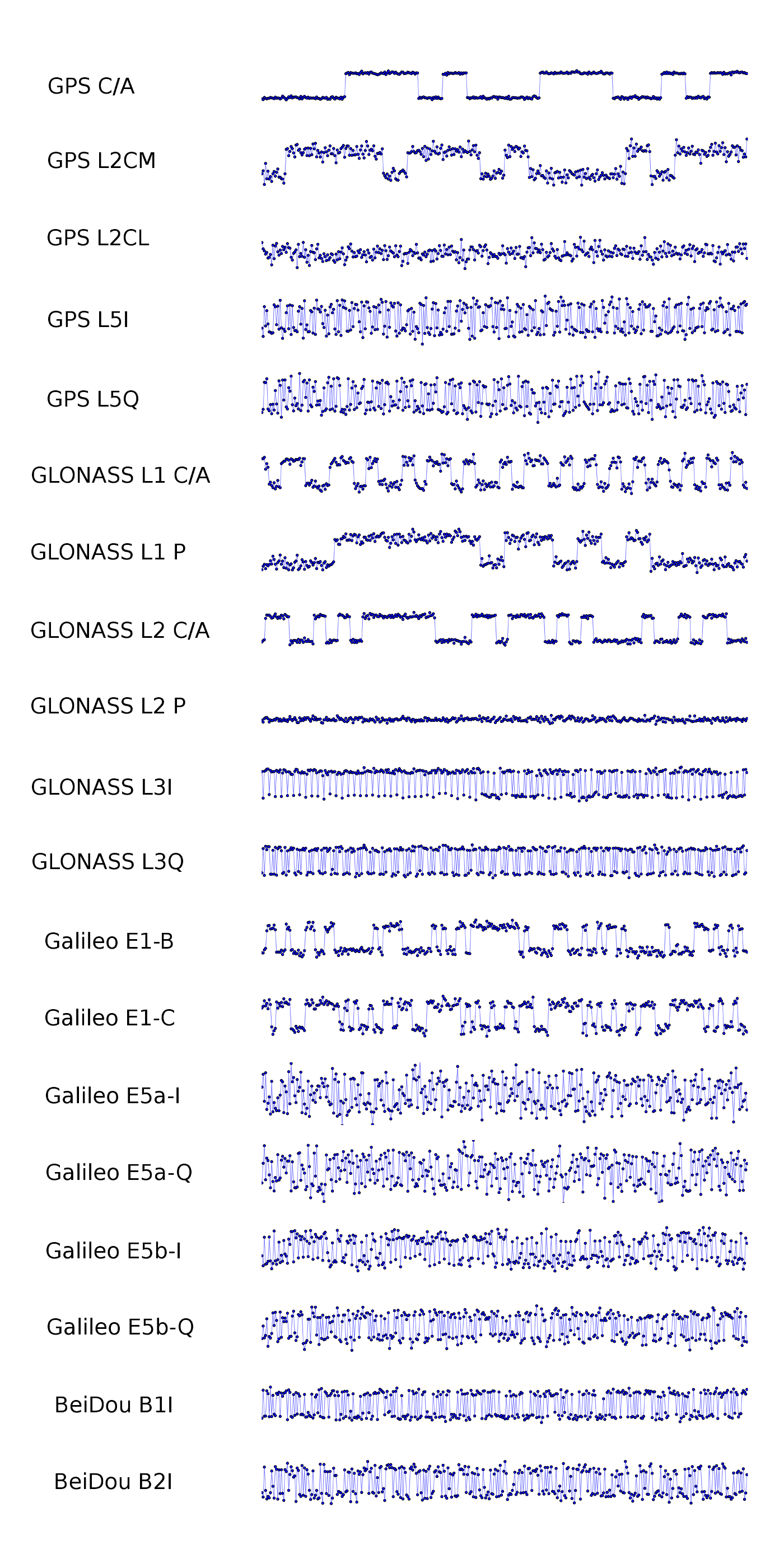Here's a fun montage of the various GNSS signals-in-space. I think this accounts for all extant open-access signals that are likely to remain so (ruling out Galileo E6 for example) and that are intended for systems having global coverage (so no QZSS or IRNSS). A few comments on the signals:
- Each waveform is 400 ms in length and is sampled at 1 ms intervals after code and carrier wipeoff
- Secondary codes have not been removed
- Carrier-to-noise ratios vary. The weakest signals are Galileo E5a-I and E5a-Q; by eye there is not much to see, but the acquisition metric is clearly well above threshold, and the histograms are clearly bimodal. My L1/L2 antenna receives some L5 but with about 15 dB of attenuation (!). I really need an antenna that covers down to L5. The GPS L5 signals must have been blisteringly strong to come through as well as they did.
- The pilot signals with no secondary codes, GPS L2CL and GLONASS L2 P, are shown correctly offset from the (undrawn) centerline. I'm not sure much is known about the data modulation on GLONASS P. Apparently L1 has some data at 50 Hz (no secondary/meander code?) and L2 is unmodulated.
- So far there are two GLONASS satellites transmitting L3OC CDMA signals. The signals shown are from PRN 30, but PRN 33 is also active and of comparable quality.
The tools for acquiring and tracking these signals are in my GitHub repository:
https://github.com/pmonta/GNSS-DSP-tools
They are command-line-ish and not very polished yet.

